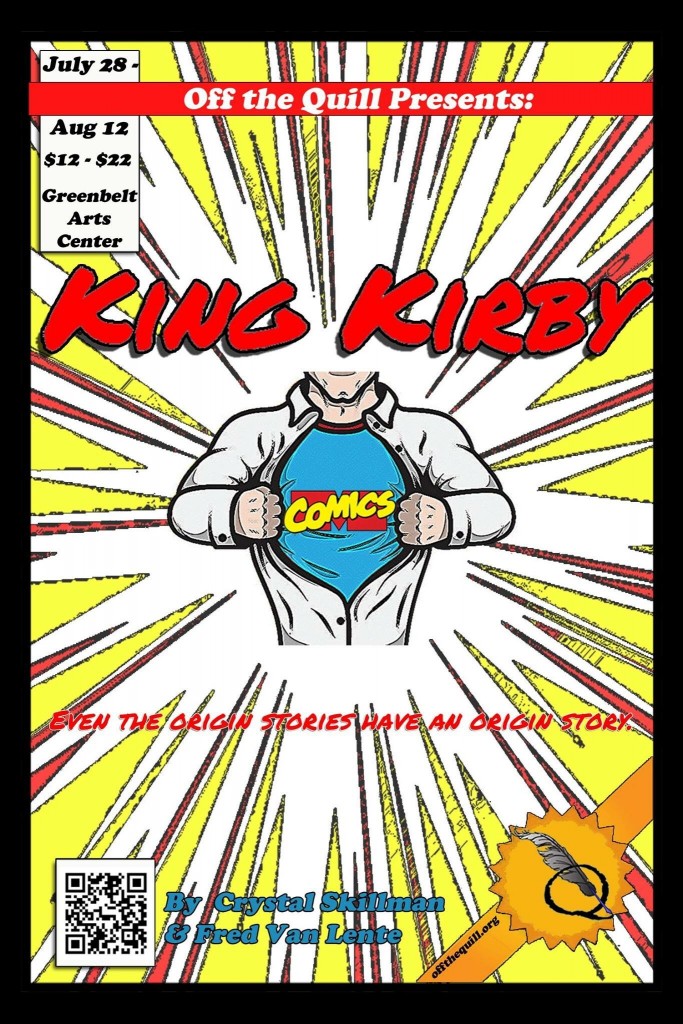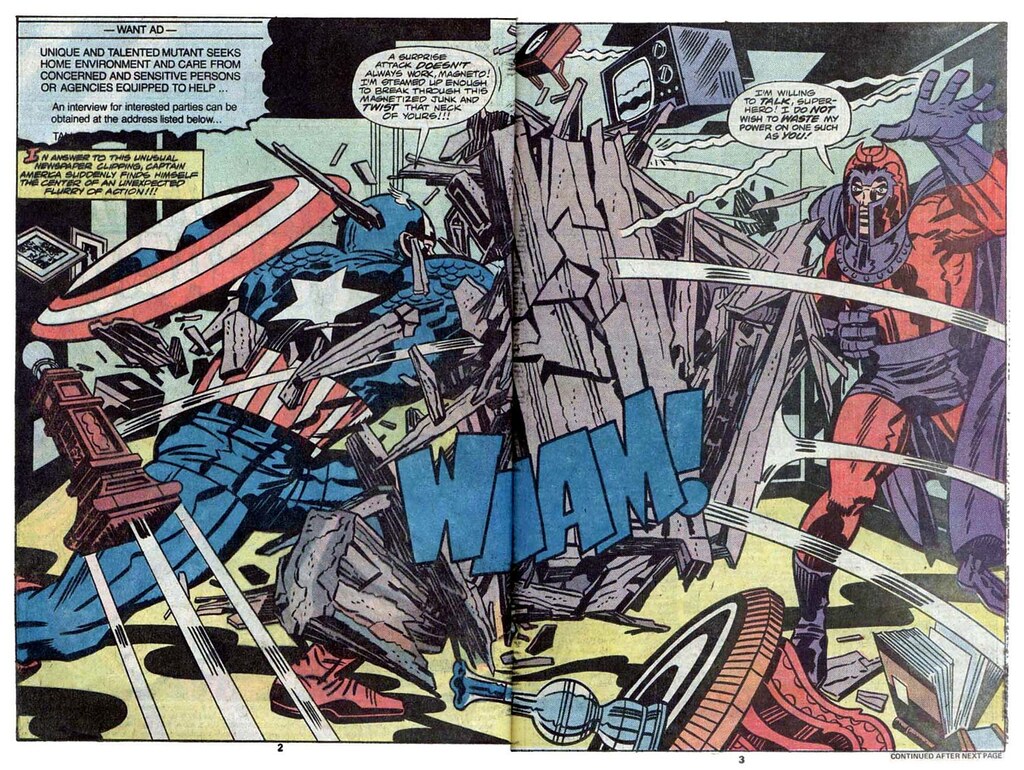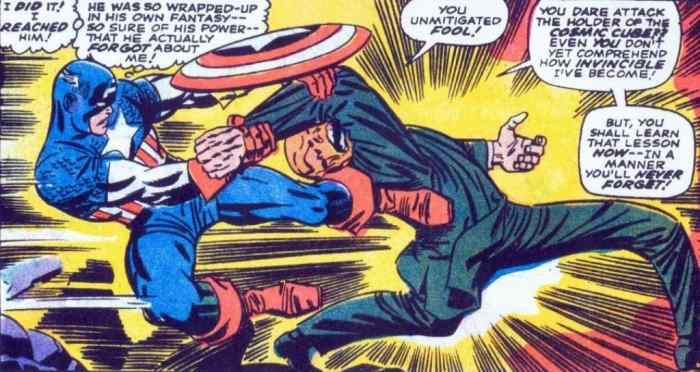 by Mike Rhode
by Mike RhodeWe're checking in with Arlington's Marty Baumann again on the publication of Toybox Time Machine, his new book from IDW, . We've featured his work in passing a couple of times in the past, and it's been six years since I interviewed him for the Washington City Paper (which sadly is currently for sale in case anyone reading this can afford to buy a newspaper). He's answered my usual questions again, but in new ways, as well as discussing his recent work so I'm running the whole interview here. Honestly, both Marty and I forgot about that interview (an occupational hazard when you know people personally and socially. I've seen him at the Baltimore Comic Con in September and at a flea market last weekend when he bought some Kirby and Kubert comic books). I highly recommend his new book; Marty is one of the cleverest illustrators I know -- as this interview shows.
Marty has provided the following biographic information:
Marty Baumann is an illustrator, graphic artist and production
designer. He has contributed to some of the most popular, Oscar-winning
animated films of all time.
Marty has worked as an artist at Walt Disney Pictures and Pixar Animation Studios as an illustrator, graphic artist and production designer on such films as “Toy Story 3,” “Big Hero 6,” “Zootopia,” “Cars 2,” “Planes,” “Wreck-It Ralph 2” and many others. He also helped develop theme park installations, toy packaging and Pixar corporate branding.
Marty has rendered illustrations and developed characters for toy manufacturers, magazines and newspapers, illustrated children’s books, created logos, info-graphics, broadcast promotions and presentation art for Hasbro, Universal Studios, National Geographic, Scholastic Books, Nickelodeon and many others.
Recent projects include his role as concept artist for the new “Mystery Science Theater 3000,” and the visual development of Sir Paul McCartney’s feature film, “High in the Clouds.”
Marty has been a rhythm and blues singer/guitarist for more than 40 years. He’s shared the stage with Hound Dog Taylor’s Houserockers, Danny Gatton, Bobby “Blue” Bland, Jr. Walker and the All Stars, Fenton Robinson, John Hammond, Johnny Winter and others. Marty’s sold-out CD “Let’s Buzz Awhile” features 13 original blues tunes.
He encourages everyone to adopt at least one dog.
Marty has worked as an artist at Walt Disney Pictures and Pixar Animation Studios as an illustrator, graphic artist and production designer on such films as “Toy Story 3,” “Big Hero 6,” “Zootopia,” “Cars 2,” “Planes,” “Wreck-It Ralph 2” and many others. He also helped develop theme park installations, toy packaging and Pixar corporate branding.
Marty has rendered illustrations and developed characters for toy manufacturers, magazines and newspapers, illustrated children’s books, created logos, info-graphics, broadcast promotions and presentation art for Hasbro, Universal Studios, National Geographic, Scholastic Books, Nickelodeon and many others.
Recent projects include his role as concept artist for the new “Mystery Science Theater 3000,” and the visual development of Sir Paul McCartney’s feature film, “High in the Clouds.”
 | |
| Marty's dog Summer |
Marty has been a rhythm and blues singer/guitarist for more than 40 years. He’s shared the stage with Hound Dog Taylor’s Houserockers, Danny Gatton, Bobby “Blue” Bland, Jr. Walker and the All Stars, Fenton Robinson, John Hammond, Johnny Winter and others. Marty’s sold-out CD “Let’s Buzz Awhile” features 13 original blues tunes.
He encourages everyone to adopt at least one dog.
What type of comic work or cartooning do you do?
As far as personal projects: My influences are primarily of mid-century vintage; the logos, designs, signage and draftsmanship, often combining limited color palettes, stylized figures and crazy type treatments. They communicate fun and excitement in a way we don't see today. I tried hard to emulate that aesthetic in my book, "Toybox Time Machine."

As far as film work goes: Logos, title card design, billboards and signage, magazine covers, posters and general production design and just about anything you see in the background or applied to the body of a character.
How do you do it? Traditional pen and ink, computer or a combination?
I do some pencil roughs, scan them and use primarily Illustrator and a bit of Photoshop. If I'm doing a commission or a personal piece for someone I might print what I've done digitally and finish it with touches of ink.
When (within a decade is fine) and where were you born?
I was born in Maryland the same year "Invasion of the Saucer Men" hit theaters. Is that specific enough?
 What is your training and/or education in cartooning?
What is your training and/or education in cartooning?Jack Kirby comics. He's one of my heroes. It might not show in my style but I started drawing because of him. I've had no formal training.
Who are your influences?
The first books I actually recall buying were Joe Kubert's Sgt. Rock comics. Starting in grade school it was Kirby. Then a friend said, "If you like Kirby, get a load of Steranko -- and I got a load. Then I discovered Ditko, Toth, Meskin. As time went on I became aware of the great magazine, paperback and movie poster illustrators -- James Bingham, Robert McGinnis, James Bama. And then the groundbreaking design work of the UPA cartoons and the logo and title designs of Saul Bass and Paul Julian. Not to mention the great children's book artists, a particular favorite being the great Mel Crawford -- who also worked in comics and fine art.
If you could, what in your career would you do-over or change?
Nearly everything! I tell aspiring artists to look at my career path and do the opposite. I wish I'd taken art classes, studied life drawing, studied painting, tried oils, charcoal, etc. I fell under the sway of rhythm and blues and began playing in clubs as a teenager. I was trying to focus on two creative areas. Maybe I should have focused on just one -- but I couldn't! In the end I think they complimented one another.
 What work are you best-known for?
What work are you best-known for?I didn't know that I was KNOWN! So I'd have to say my Disney/Pixar work.
What work are you most proud of?
I'll cite this example: I did a TON of work on "Zootopia." My wife and I saw it in a theater packed with kids and they LOVED it. I was kinda proud that I helped in some small way to make those kids happy.
How did you come up with the idea of Toybox Time Machine?
Well, after having one children's book idea after another rejected, I decided to draw whatever the heck I wanted. I love old toys. I have a small collection of old favorites. And I think my real artistic strengths are design, typography and color. I tried to channel the artistic influences mentioned previously and I never had more fun working on a project.
What's the process of conceptualizing and then drawing a toy that never existed?
My wife and I go to lots of estate sales. I buy the stuff nobody else wants: stacks of old magazines, postcards, travel literature. I snap pictures of anything with nifty retro packaging. It seems that in the 1940s and 50s every advertiser employed an illustrator in lieu of using a photo. With inspiration like this the ideas flow.

How did IDW come to publish this?
At the risk of sounding like a name-dropper, Jim Steranko has been something of a mentor since I was a teenager. (When he critiques your work, you KNOW you've been critiqued, and HOW!) He mentioned to IDW that they might want to look at my work, and, as Bogart would say, it was the beginning of a beautiful friendship.
What's your favorite non-existent toy?
That's the one question I'm going to side-step -- because I just don't know! The sci-fi and monster related toys would be near the top of the list. And I love cowboys!
How did you end up working for Pixar?
I had always loved what Pixar was doing. That retro sensibility seemed to be present in everything they turned out. Quite by accident I discovered that they were looking for a Graphic Artist and I sent them some stuff. They called me a couple weeks later, flew me out there, apparently liked me, and within a few weeks, we were living in San Francisco! I know that makes it sound easy, but let me be clear, I paid my dues for years working for newspapers, magazines, ad agencies, toy companies...
How has the experience been?
It's been great -- and also tough. Every artist working there was better than me! So I really had to up my game.
What have you worked on for them?
"Big Hero 6," "Zootopia," "Toy Story 3," "Cars 2," so many shorts that I can't remember them all -- "Hawaiian Vacation," "Small Fry," "Partysaurus Rex". I also worked on installation pieces for Disney resorts and contributed to the development of Cars Land at Disneyland.
What would you like to do or work on in the future?
Well, I worked on the visual development of a film with Paul McCartney. It would be cool to work with Ringo one day!
What do you do when you're in a rut or have writer's block?
Writer's block? Let me see. I, um, er -- sorry…gimme a minute...I just can't think of anything to write at the moment…
 When did you start collecting comics?
When did you start collecting comics?Maybe 1961 or 1962, when I first discovered Sgt. Rock and the Kirby monster books. I wouldn't call it "collecting" in the modern sense of the word, i.e. as if a comic book were a precious object to be preserved for posterity to accrue in value. I traded them, rolled them up and stuck 'em in my back pocket to read again later, and sat down with pencil and paper and tried to copy them. I read my favorite ones until the covers came off. Isn't that how they were meant to be used? Then -- a familiar story -- my mom threw a ton of them away.
What do you focus on? Who are your favorite comic book artists?
I guess my big four are Kirby, Kubert, Toth and Steranko. But there are so many -- the great Jack Davis, Ditko, Mort Meskin, Fred Kida, Wally Wood, and the incredibly underrated and versatile Bob Fujitani. The "Hangman" stories he did for MLJ in the mid-1940s are some of my favorites. I love the books Hillman put out in the 40s, ("Air Fighters," "Clue") and the stuff ME (Magazine Enterprises) published in the late 40s and early 50s ("Jet," "The Avenger"). I've often been asked what, in my opinion, are the best comics of all time. Without hesitation I say choose any issue of Fantastic Four from numbers 30-90. Any one of them is better than anything produced since.
How large is your collection?
It's quite modest. I'm no big-time collector. I buy comics I think I can learn from. I have dealers who save their coverless, moldy, brittle, flaking old books for me because they know I love the obscurities, learning the forgotten history of comics and discovering great cartoonists who have been unjustly overlooked. Mike Roy is a favorite, and Tony DiPrieta, and John Cassone, and Mike Suchorsky, etc. etc.
What do you think will be the future of your field?
Do you mean animation or comics-related material? In either case I don't know. What used to be marginal pop-culture interests are big, BIG business now and it's all too complicated for me to understand.
How was your Baltimore Comic Con experience this year? How often have you attended it?
I always have a great time at Baltimore. I was at the very first one! I believe I've been a guest at all of them except for those that I missed when I lived in the Bay Area.
 Do you have a website or blog?
Do you have a website or blog?www.martybaumann.com
What's your favorite thing about DC?
That I don't have to commute there.
Least favorite?
The times I DO have had to commute there.
What monument or museum do you like?
Without a doubt Arlington Cemetery. Not only do we have relatives buried there, but it's brimming with history and trivia. For instance: My wife's uncle is buried just a few tombstones away from Lee Marvin -- who is buried right next to Joe Louis! Dashiell Hammett is resting there, and cartoonist Bill Mauldin.
How about a favorite local restaurant?
Caribbean Grill in Arlington, hands down.


















